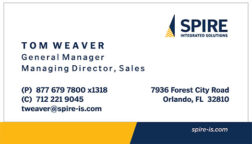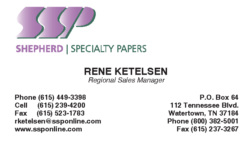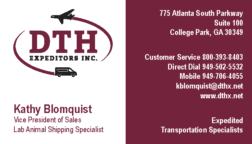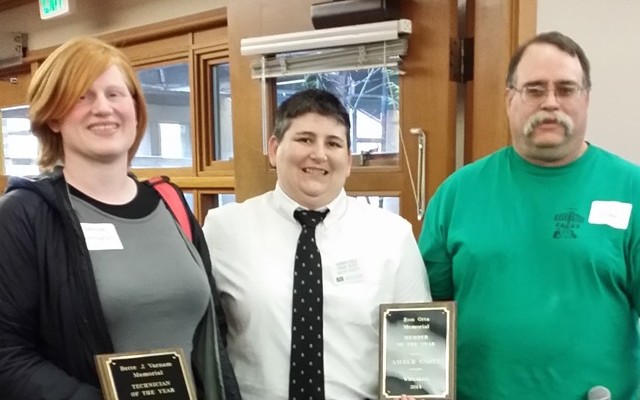
July Newsletter
IN THIS ISSUE
- Call for Newsletter Submissions
- Vivarium Ergonomics
- How to ask your employer for support earning Technician Certifications
- 2014 Trade Fair Review
- 2014 Award Recipients
- Announcements
- New AALAS CARE Website
- Technician Branch Representative (TBR) News and Views
- Trustee Adventures
Your First Step on the Path to Outreach
Consider the Washington Branch Newsletter your first step on the path to outreach!
Do you have a husbandry tip or trick that has worked wonders in your facility? Have you discovered any new information other technicians may find helpful? Any advice to technicians studying for certification? Write it up and send it in!
Long articles, short quips, big ideas, smaller tips, quotes that inspire, something to inquire… we want them all, so please answer our call!
Please send your articles, pictures, snippets, and blurbs to [email protected] for publication. Would you like a little help or assistance writing an article for the newsletter? Contact the WBAALAS Newsletter Editor ([email protected]).
Vivarium Ergonomics
By Andrea Swanson
Was Ergonomics Part of Your Training?
We all want to avoid experiencing pain or discomfort while working, but how can you reduce your exposure to common ergonomic risk factors while working in a vivarium? Preventing ergonomic related injury should be a part of every staff member’s training. Even if ergonomics was part of your training, you can still benefit from reviewing the key points of prevention. Maybe you have not had an assessment done by your facility’s EH&S professional recently, or would like to know more.
Ergonomics is the study of reducing work place injuries and musculoskeletal disorders (MSD) associated with the three most common risk factors; force, frequency and posture1. All three risk factors should be reviewed and identified in common animal care tasks, and new methods of prevention should be implemented to help improve your health and safety. Staff working in a vivarium can be exposed daily to a combination of all three risk factors.
Management and PIs can help animal care staff avoid injury through training, teamwork and open communication. Training staff in how to recognize MSD symptoms is an important step in reviewing problems before they become an injury. Analyzing and correcting actions when new procedures or equipment are being used can help staff avoid MSD, stress, and strain. Animal care staff should be involved in the process of accessing their work areas and know how to report any signs or symptoms of MSD. Reviewing current processes can be completed easily using lean principles2 while keeping ergonomic factors in mind.
Assigning a staff member to review, analyze, and plan changes according to the areas that need improvement can be time consuming. Here are a few ways you can start helping prevent MSD today: try scheduling additional short breaks between physically demanding tasks to allow time for rest and recovery, increase task variability by rotating staff through several jobs with varying physical strain, and improve communication to staff about the length of studies and end points so they can better foresee and manage their exposure to ergonomic risk.
When possible, another simple approach to help avoid MSD is the social housing of animals, which is not only beneficial to the animals, but also to the staff by limiting the amount of bending and twisting to the top and bottom rows of racks. When possible, it is ideal to avoid stacking cages above shoulder height.
If you have any problems with implementing the changes needed to help reduce the three risk factors for MSD, try initiating a discussion with your supervisor. Demanding manual tasks can lead to increased errors, poor performance, and reduced productivity. Removing risk factors for ergonomic injuries can help improve efficiency and performance. Successful review and intervention runs parallel with research objectives and should be a priority at your facility or research institution.
Using the Plan, Do, Check and Act (PDCA) method3 is a great model of assessment because it calls for continuous improvement. There are several ways to recognize, evaluate, and adjust current workplace methods. One technique is to identify the animal care tasks that carry the most risk and review any current concerns animal care staff have in those specific areas. Prioritize the risks in your work area and determine the changes needed to be effective in reducing those risks. Supervisors should train staff on the changes made and review again to ensure the changes were successful. Repeat the process indefinitely.
Routine review through anonymous surveys provided to the animal care staff can help catch early reporting of possible MSD symptoms. The reviews should be promptly examined and a plan created to help reduce any reported symptoms. After any subsequent changes occur, a second survey should be provided to examine any positive changes regarding previously reported symptoms.
For more information on how to develop your plan for assessment and training please check out the following links:
- An Ergonomics Process for the Care and Use of Research Animals
- Improving Animal Research Facility Operations Through the Application of Lean Principles.
- Plan-Do-Check-Act Cycle
- National Institute for Occupational Safety and Health
- Manual Materials Handling Guidelines
- An Overview of Lean Management in Lab Animal Facilities
3 EASY STEPS TO EARN TECHNICIAN CERTIFICATION
(How to Ask Your Employer for Support)
By Andrea Swanson
STEP ONE
Gather all supporting materials needed for requesting assistance from your employer. The information should answer any possible questions your supervisor could have.
The Arizona Branch AALAS website currently has a resource page summarizing the National AALAS website information and materials needed for earning certifications.
STEP TWO
Compose your request to your supervisor containing all necessary information.
- How earning certification will improve your job performance.
- If earning your certification meets a component of your company’s or institution’s mission statement, include how in your request.
- List the total costs for all materials and the exam.
- Include approximately how long it will take to prepare for the exam. Example lecture schedules for each exam can be found here.
- What does the training materials and exam cover, and how are they relevant to your position? Click on the exam name for ALAT, LAT and LATG information regarding the exam content from the AALAS.org website.
STEP THREE
Ask! Be specific in what ways your employer can help support you while working towards earning your certification. Examples:
- Cover the cost of study materials
- 1 hour a week of paid study time
- Brown bag lunch meetings with coworkers who are also working toward their certifications
- Cover the cost of the exam or cover the cost of the exam after earning your certification.
2014 Trade Fair Review
This year’s Trade Fair was another great success! If you missed attending, we would love to see you next year! The low cost of the event includes free parking, breakfast and lunch. Last but not least, great raffle prizes! The Trade Fair is a great resource and networking opportunity for both animal technicians and facility managers alike. Representatives from over 25 different vendors were available during the Trade Fair, and they each handed out convenient freebies to use back at work. A favorite to pick up this year was reusable bags.
In addition to speaking with vendors about new products, the Trade Fair offered 6 engaging talks covering perspectives on multiple disciplines. In one of the talks, Dr. Rajesh U.,DVM spoke about The Power of Observation. This skill is unknowingly used a majority of the time on any given day by staff working in animal care. Typically, a person will enhance their observational skills over time without even being aware of it. Ever notice your cage washer making a funny sound? Did it start whistling instead of banging? What about the cart missing inside a colony room you checked this morning? Did a researcher already grab it for the day?
According to Rajesh, “Often times, what separates the best lab animal techs from the rest of the group is their powers of observation.” So go you! Keep up on the good work and continue to hone your observational skills by trying some exercises presented by Rajesh at his talk.
One popular example was a Spot the Difference Game. Look at an image for 10 seconds and then answer questions related to objects found in the image. How accurate are you? You can play this quick game during training sessions or for team building exercises, and include images from around your vivarium. Test your current observational skills by watching this fun short video.
2014 WBAALAS Award Recipients
Bette J. Varnam Washington Branch Technician of the Year Award
%%wppa%% %%photo=2%% %%align=center%%
Recipient: Denise C. –FHCRC
Ron Orta Washington Branch Member of the Year Award
%%wppa%% %%photo=4%% %%align=center%%
Recipient: Amber C. –FHCRC
Announcements
1. Summer Picnic
Join us for the annual Branch Picnic on Saturday, August 16th. We will be at a new location this year, Gas Works Park Shelter 01. Mark your Calendar! Free for members and their families. For more information please visit the website events page.
2. Social Media and District 8
Did you know that District 8 is on both Facebook and LinkedIn?
Search District 8 AALAS on LinkedIn and ask to join the group for information on what is happening in the District and start up some exciting LAS discussions. Recent discussions have been highlighting the District 8 conference.
On Facebook the District 8 page is a secrete by invite only for security reasons but if you would like to join just send a request to Amber Carte at [email protected] , list where you work and the email address you would like the invite sent to. We recently started a photo album for Tech week pictures on the page and we try to keep up on all the branch news.
AALAS Foundation Announces New CARE Website
The American Association for Laboratory Animal Science (AALAS) Foundation is a non-profit organization dedicated to educational outreach on the essential role of responsible laboratory animal care and use in science to advance medical progress for human and animal health. The AALAS Foundation develops educational materials, web-based public information resources and training materials to help educate the public about the importance of quality laboratory animal care.
The AALAS Foundation is proud to officially announce its new CARE website – www.care.aalas.org
This site was designed to support the AALAS Foundation’s bold efforts to help educate the public about the incredibly caring professionals working in the field of laboratory animal science. The CARE site hosts a growing collection of video interviews of people working in the field of laboratory animal science (LAS) and stories of survivors who have benefited greatly thanks to biomedical research. The site also contains useful information for anyone interested in a career in this tremendously rewarding field.
If you’ve not done so already, please check out the new site and share it with your friends and family. Many may not be aware or fully understand that every day, across the world, there are dedicated and compassionate people working hard to ensure that all animals working in research receive the care, respect, and honor they deserve. Be sure and “like” the AALAS Foundation Facebook page to stay on top of the most current AALAS Foundation news and public outreach efforts.
Technician Branch Representative News and Views
Spring 2014
Welcome to the Quarterly Technician Branch Representative (TBR) News and Views! Check out what has been going on in other branches. If you have comments, suggestions, or other ideas please let us know. Thank you,
Morag Mackay [email protected] & Amber Carte [email protected]
Palms to Pines
Greetings from Palms to Pines, Things have been slowing down for us after tech week. We got our tech week packages out and from what I have heard they were liked by our members. We are looking forward the District 8 meeting next month and even had a raffle for 3 of our members to get money to attend the meeting. We are starting to plan our workshops for the year but don’t have anything definitive yet.
Washington
Washington Branch celebrated member appreciation with Pizza and Movie Night at Cinebarre a popular – 21 and over theater where you can eat, drink and enjoy a movie at the same time. A lifetime membership award was presented and our honoree was given a plaque created from the Branch submission to the AALAS Foundations 2013 Horse Race. The WBAALAS Trade Fair recently wrapped up with excellent attendance and positive feedback about the meals, vendor displays, informative talks, and the always popular raffle. We are looking forward to our annual membership picnic this summer being held near the shores of Lake Union at beautiful Gas Works Park. Members will celebrate with friends, family, kids, colleagues, games, pets, and most important… BBQ!
Trustee Adventures
So far this year Amber has had a blast being broken in as the new trustee attending the Oregon Branch Annual Membership Dinner as well as the Washington Branch Trade Fair. She is looking forward to visiting and speaking at the Northern Rocky Mountain Branch in June. Both of us are working hard on preparing for a great District 8 meeting and welcoming future leaders at Morag’s Mini-Leadership Academy!
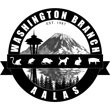
 Download this newsletter
Download this newsletter